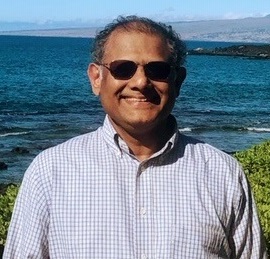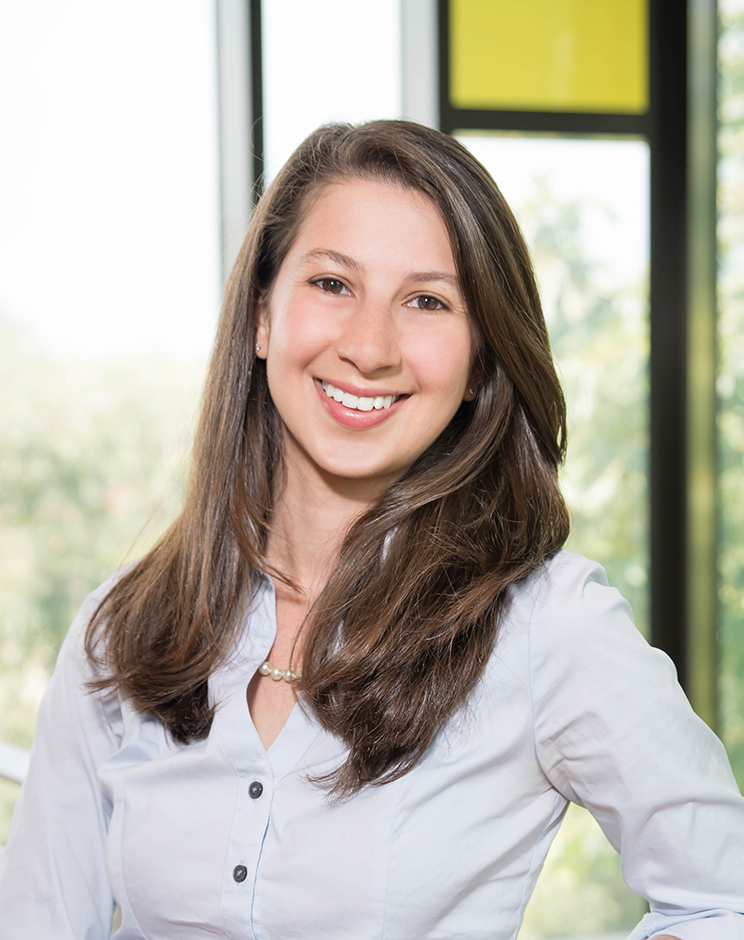Sydney Parker Memorial Lecture
Data-Driven Neuroscience, Neurology and Psychiatry: Feature Extraction, Brain Connectivity and Classification
Tuesday, November 3, 2020
08:00 - 09:30
Prof. Keshab K. Parhi
University of Minnesota
Large amounts of imaging data from the brain are now available to better understand the brain and “reverse engineer” the brain. Signal processing and machine learning can unravel mysteries of the brain and can be used to diagnose various brain disorders. This talk will describe analysis of functional magnetic resonance imaging (fMRI) data collected from healthy subjects at the Center for Magnetic Resonance Research (CMRR) of the University of Minnesota (UMN) as part of the U.S. Human Connectome Project (HCP), analysis of electroencephalogram (EEG) for prediction and detection of seizures from publicly available datasets, analysis of magnetoencephalogram (MEG) data collected at the Minneapolis VA hospital from subjects with schizophrenia, and analysis of fMRI data collected at the UMN from adolescents with psychiatric disorders and healthy controls. One goal of the analysis is to extract appropriate features and design appropriate classifiers. Sub-graph entropy, a measure of static connectivity, is introduced to discover predictive subnetworks that are used to classify task vs. no-task or to discriminate two tasks from the task fMRI data collected from the healthy subjects from HCP. Tensor decomposition approach is used to extract dynamic brain connectivity and is used to predict gender and fluid intelligence of the healthy subjects from HCP. About 1% of world population suffer from epilepsy. Spectral-domain features, such as spectral powers in different bands and ratios of spectral power of two different bands extracted from EEG and intra-cranial EEG, are used to predict and detect seizures with high sensitivity and specificity. Band-power ratios of MEG during word processing task are used as features to identify subjects with schizophrenia. Resting-State fMRI data are used to design classifiers for identifying three types of psychiatric disorders among adolescents: borderline personality disorder (BPD), obsessive compulsive disorder (OCD) and major depressive disorder (MDD) using spectral-domain features and static brain connectivity. In summary, extracting appropriate biomarkers using spectral-temporal-spatial signal processing approaches and classifying states using machine learning approaches can assist clinicians in predicting and detecting various brain disorders and to understand more about the healthy brain. These biomarkers can be tracked to design personalized therapy and effectiveness of therapy by closed-loop drug delivery or closed loop neuromodulation, i.e., brain stimulation either by invasive or non-invasive means using electrical or magnetic stimulation.

Keshab K. Parhi received the B.Tech. degree from the Indian Institute of Technology (IIT), Kharagpur, in 1982, the M.S.E.E. degree from the University of Pennsylvania, Philadelphia, in 1984, and the Ph.D. degree in EECS from the University of California, Berkeley, in 1988. He has been with the University of Minnesota, Minneapolis, since 1988, where he is currently Distinguished McKnight University Professor and Edgar F. Johnson Professor in the Department of Electrical and Computer Engineering. He has published over 650 papers, has authored the textbook VLSI Digital Signal Processing Systems (Wiley, 1999) and coedited the reference book Digital Signal Processing for Multimedia Systems (Marcel Dekker, 1999). Dr. Parhi is widely recognized for his work on high-level transformations of iterative data-flow computations and for his research on hardware accelerators for signal processing and networking systems. His current research addresses VLSI accelerators for signal processing and machine learning including deep learning, data-driven neuroscience, hardware security and molecular computing. Dr. Parhi is the recipient of numerous awards including the 2003 IEEE Kiyo Tomiyasu Technical Field Award, the 2017 Mac Van Valkenburg award, the 2012 Charles A. Desoer Technical Achievement award and the 1999 Golden Jubilee medal from the IEEE Circuits and Systems Society, and the 2004 F. E. Terman award from the American Society of Engineering Education. He served as the Editor-in-Chief of the IEEE TRANSACTIONS ON CIRCUITS AND SYSTEMS —PART I (2004-2005 term), as a distinguished lecturer for the IEEE Circuits and Systems society during 1996-1998 and 2019-2021, and was an elected member of the Board of Governors of the IEEE Circuits and Systems society from 2005 to 2007. He is a Fellow of IEEE (1996) and the AAAS (2017).
Wednesday Keynote Presentation
Capturing the First Image of a Black Hole & Designing the Future of Black Hole Imaging
Wednesday, November 4, 2020
08:00 - 09:30

Prof. Katie Bouman
California Institute of Technology
This talk will present the methods and procedures used to produce the first image of a black hole from the Event Horizon Telescope, as well as discuss future developments for black hole imaging. It had been theorized for decades that a black hole would leave a "shadow" on a background of hot gas. Taking a picture of this black hole shadow would help to address a number of important scientific questions, both on the nature of black holes and the validity of general relativity. Unfortunately, due to its small size, traditional imaging approaches require an Earth-sized radio telescope. In this talk, I discuss techniques the Event Horizon Telescope Collaboration has developed to photograph a black hole using the Event Horizon Telescope, a network of telescopes scattered across the globe. Imaging a black hole’s structure with this computational telescope required us to reconstruct images from sparse measurements, heavily corrupted by atmospheric error. This talk will summarize how the data from the 2017 observations were calibrated and imaged, and explain some of the challenges that arise with a heterogeneous telescope array like the EHT. The talk will also discuss future developments, including how we are developing machine learning methods to help design future telescope arrays.
Katherine L. (Katie) Bouman is a Rosenberg Scholar and an assistant professor in the Computing and Mathematical Sciences and Electrical Engineering Department at the California Institute of Technology. Before joining Caltech, she was a postdoctoral fellow in the Harvard-Smithsonian Center for Astrophysics. She received her Ph.D. in the Computer Science and Artificial Intelligence Laboratory (CSAIL) at MIT in EECS. Before coming to MIT, she received her bachelor's degree in Electrical Engineering from the University of Michigan. The focus of her research is on using emerging computational methods to push the boundaries of interdisciplinary imaging.